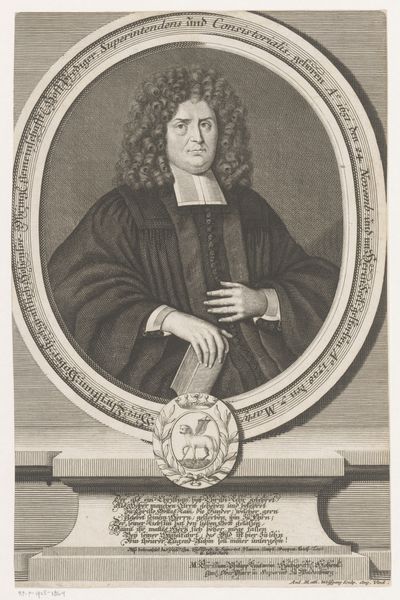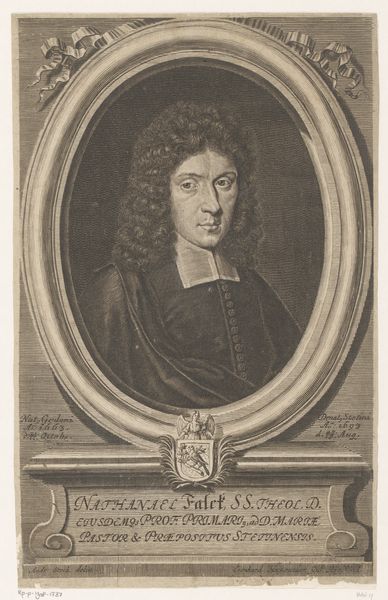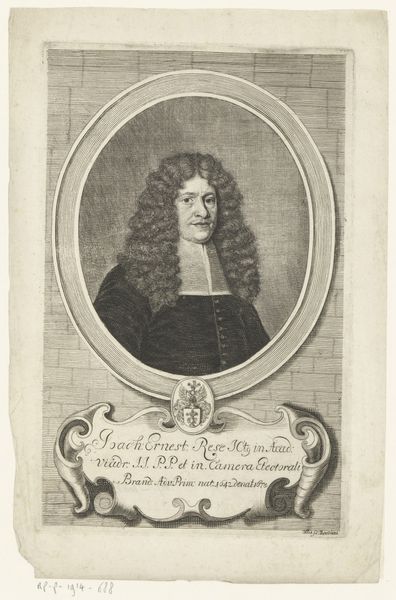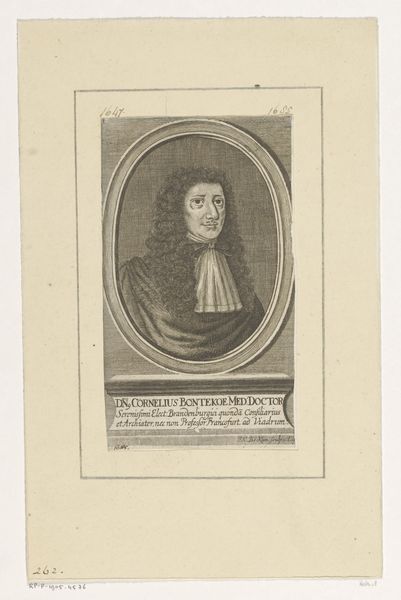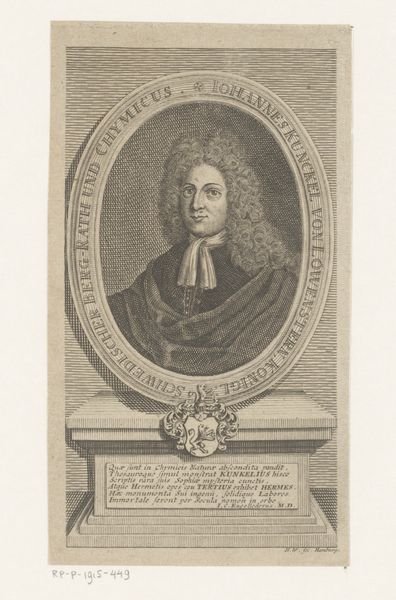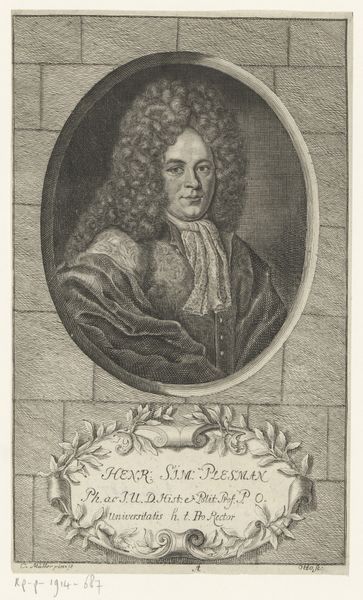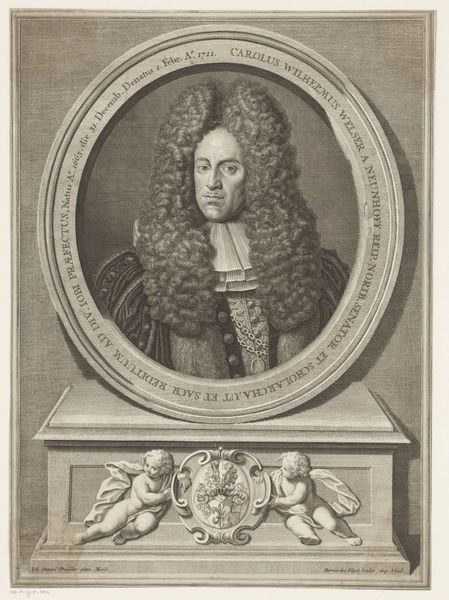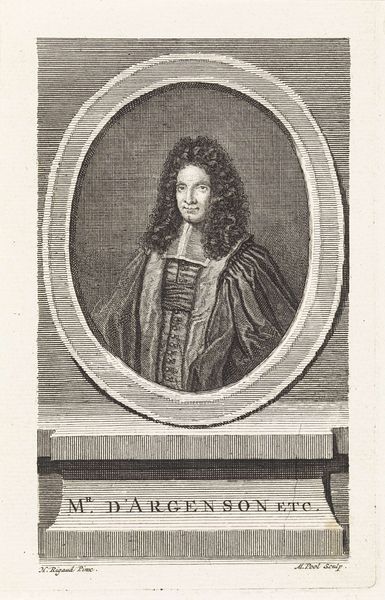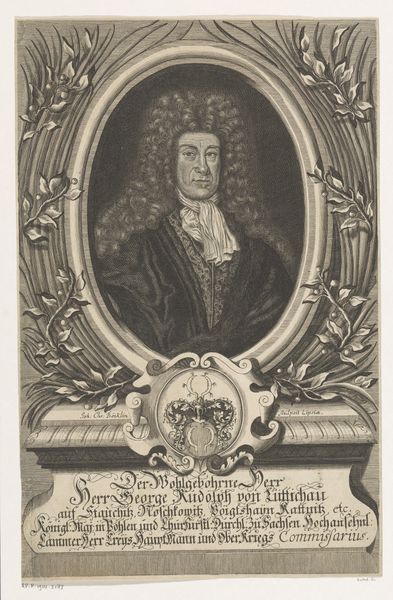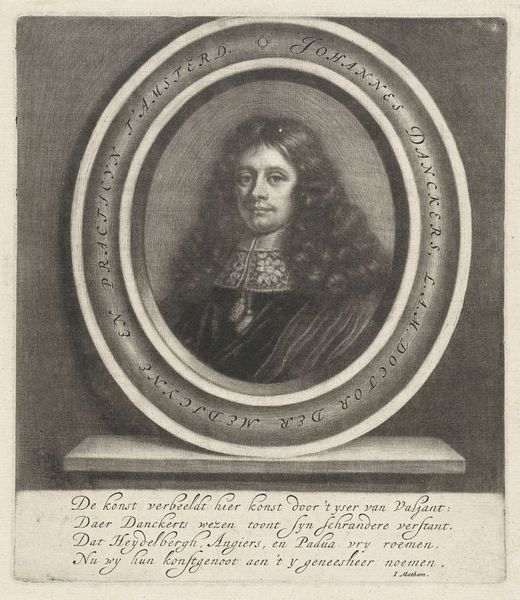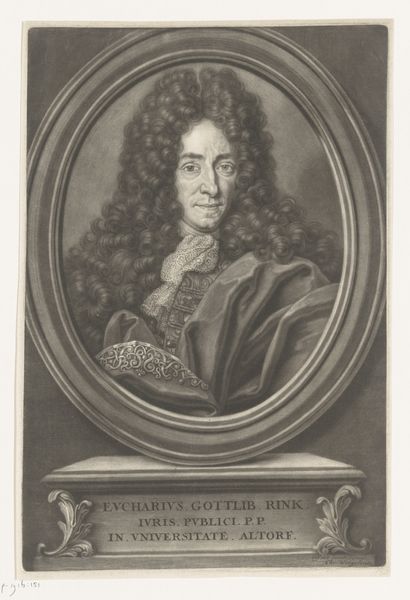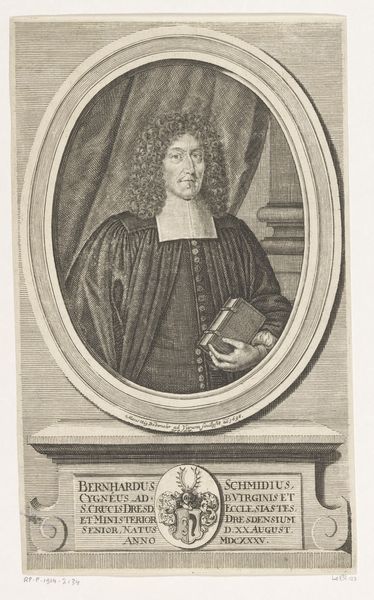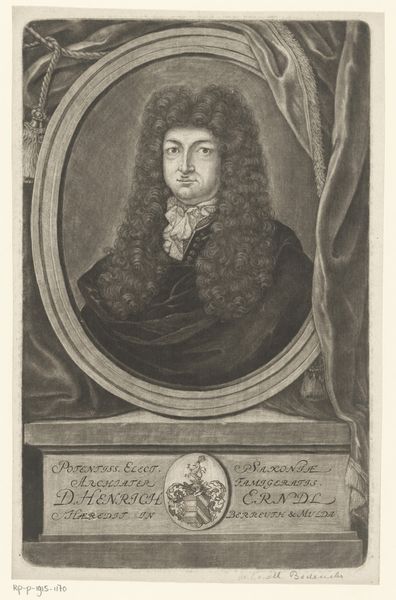
engraving
#
portrait
#
baroque
#
caricature
#
line
#
portrait drawing
#
history-painting
#
academic-art
#
engraving
#
realism
Dimensions: height 195 mm, width 138 mm
Copyright: Rijks Museum: Open Domain
Curator: I’m immediately drawn to the contrast here. The sitter’s gaze feels so direct and knowing, yet the engraving itself, with its intricate details and oval frame, lends a formality that feels almost theatrical. Editor: Indeed. We are looking at an 18th-century engraving titled "Portret van Domenico Guglielmini." It was created by Joseph de Montalegre. Considering the context of the Enlightenment, portraits like this were more than just likenesses; they were deliberate constructions of identity and social standing. Curator: Absolutely. Domenico Guglielmini, judging by the snake coiled around a staff, a clear symbol of medicine, and the globe just beneath, probably saw himself—and wished to be seen—as both a healer and a man of science, straddling those worlds. The Baroque period loved its symbolic weight. Editor: That’s insightful. The inclusion of those particular symbols feels quite strategic. We might see this portrait, then, as an early form of what we now call branding: constructing and disseminating a specific image to shape public perception of a professional, albeit in an era rife with inequities of access. Curator: You can practically see the artist’s hand, Angelus Michael Carazoni, deliberately shaping our perception through line and shadow. There is almost an exaggerated academic flair at play here. I find it incredibly striking. And I wonder about Domenico Guglielmini himself – did his actual work live up to the ideals this image projects? Editor: And did that even matter? The visual power of this carefully constructed portrait, replicated through print, granted the possibility to create an intellectual persona. These kind of portraits tell us how Enlightenment figures understood progress and how that idea was actively sold. Curator: I am constantly left thinking about the social structures that give way to artwork, and the cultural consequences, which continue to shape the language with which we describe gender and race today. Editor: These potent symbols were a kind of cultural shorthand – recognizable even now, which suggests some visual ideas, and especially, values have proven remarkably resilient. This engraving offers a glimpse into how past societies encoded meaning into the images they consumed, and the ways those visual echoes still reverberate today.
Comments
No comments
Be the first to comment and join the conversation on the ultimate creative platform.
